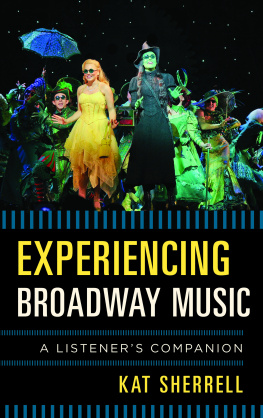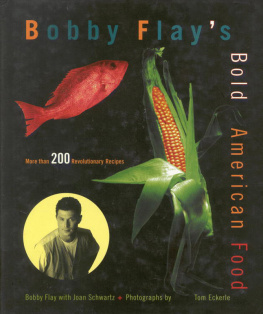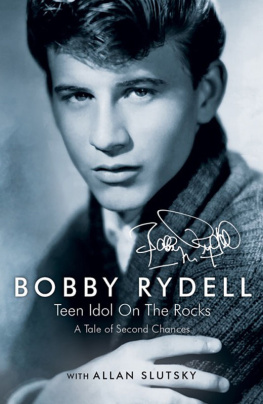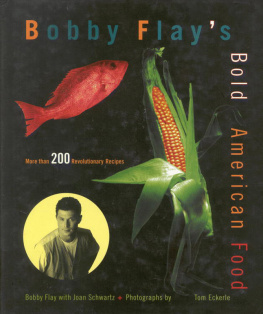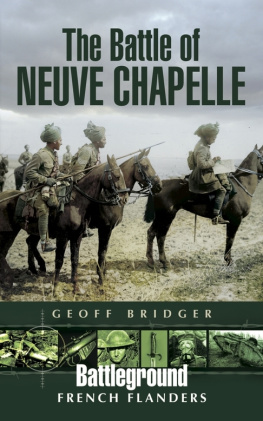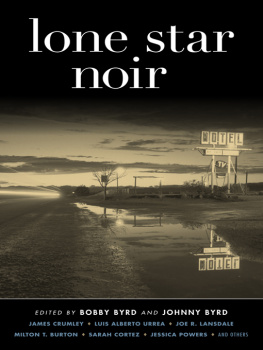
Praise for Where the Tall Grass Grows
Bridgers book is a gift to all who love the American West. What they may find is that the West they love is a mythology that tells them more about their human selveswho they arethan the place they love. Any book that can do that is worth reading.
Daniel Wildcat
Where the Tall Grass Grows offers a refreshing perspective that will certainly be discussed by Indians and non-Indians alikea must-read for anyone who wants to know how we as Indian people were turned by Hollywood and politicians from Noble Redmen into the Savage Indians. This book is the truth and everyone should read it.
J. R. Mathews, executive director, Native American Productions, and former chairman of the Quapaw Tribe of Oklahoma
Other books by Bobby Bridger
A Ballad of the West
Buffalo Bill and Sitting Bull: Inventing the Wild West
Bridger (autobiography)
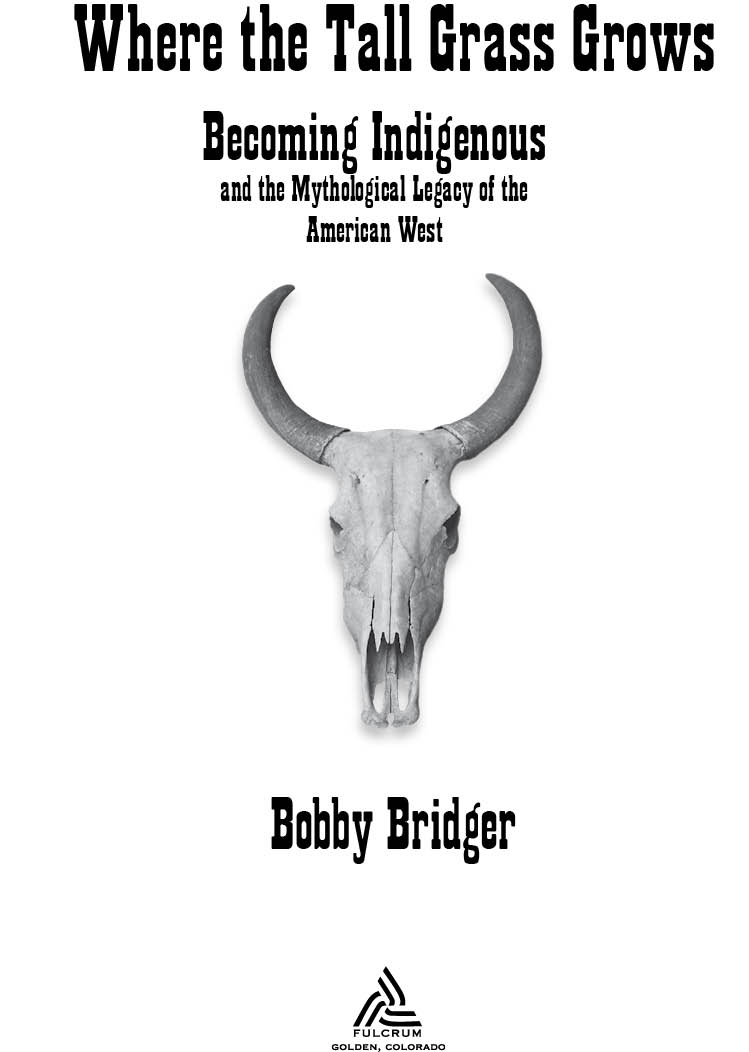
2011 by Bobby Bridger
All rights reserved. No part of this book may be reproduced or transmitted in any form or by any means, electronic or mechanical, including photocopying, recording, or by an information storage and retrieval systemexcept by a reviewer who may quote brief passages in a reviewwithout permission in writing from the publisher.
Library of Congress Cataloging-in-Publication Data
Bridger, Bobby.
Where the tall grass grows : becoming indigenous and the mythological legacy of the American West / Bobby Bridger.
p. cm.
Includes bibliographical references and index.
ISBN 978-1-55591-454-7 (pbk.)
1. Indian mythology--West (U.S.) 2. Indians of North America--West (U.S.)--History. 3. Frontier and pioneer life--West (U.S.)--History. 4. Indians in popular culture. 5. Indians in literature. 6. Indians in motion pictures. I. Title.
E78.W5B75 2011
398.20899--dc23
2011020027
Printed in the United States of America
0 9 8 7 6 5 4 3 2 1
Design by Jack Lenzo
Cover images: skull Kurtwilliams | Dreamstime, parchment sharonj430 | flickr creative commons, grass Martin Pettitt | flickr creative commons
Fulcrum Publishing
4690 Table Mountain Dr., Ste. 100
Golden, CO 80403
800-992-2908 303-277-1623
www.fulcrumbooks.com
Contents
Part I
Part II
Part III
Acknowledgments
I wish to thank my friend of thirty-six years, Barbara Deloria, who took the first draft of this manuscript to her late husbands friend, editor, and publisher at Fulcrum Publishing, Sam Scinta. I was initially somewhat intimidated to be working with Vine Deloria Jr.s editor and publisher, but Sams genuineness and friendly personality quickly allowed me to relax and discover it was truly a pleasure to work with him. Sam never insisted on anything editorially; instead he skillfully led me to make decisions about the manuscript myself. Sams vast knowledge of American Indian history and culture inspired perceptive suggestions and notes that invariably helped to further develop and more clearly articulate themes throughout my text.
I also want to thank Barbara and Vines son Philip for taking time from his very busy schedule to read my manuscript. Phils suggestions helped me with the fine-tuning of many historical facts and his insight and notes were invaluable to the ultimate trajectory of the book by encouraging me to dig deeper into the development of my themes and clarify their logical implications and consequences.
I also wish to thank the books first editor, Faith Marcovecchio, who read early drafts of the manuscript and offered the splendid notes that helped me recognize, clarify, and define the eventual three-part structure of the book. And I want to thank Haley Berry, who did the final editing and polished things up very nicely stylistically, and Jack Lenzo, whose beautiful design provided an elegant visual expression of the essence of the book. Finally I wish to thank my wife, Melissa, and son, Gabriel, for their loving patience and understanding while I was in the woodshed so often with the book.
Introduction
Becoming Indigenous
In Nebraska the first Sunday each August is an official holiday proclaimed to honor the states Poet Laureate in Perpetuity and the United States official Prairie Poet Laureate, John G. Neihardt. Neihardt Day centers on festivities seventy-five miles north of Omaha in the poets adopted hometown, Bancroft. Completed in 1976, the circular John Neihardt Center is easily the most modern building in the tiny farming village. Every Neihardt Day, however, Bancrofts population swells as local farmers and merchants leave shops and soy bean and corn fields to greet visitors arriving from all over the world to celebrate the poet and his many contributions to western history and literature.
In 1978 I performed my epic ballad about Jim Bridger and the mountain men, Seekers of the Fleece , for Neihardt Day festivities. Immediately after my performance the executive director of the Neihardt Center, Marie Vogt, informed me that noted playwright Christopher Sergel wanted to meet me, and she whispered incidentally that Mr. Sergel owned the theatrical and film rights to Neihardts classic, Black Elk Speaks . A charming gentleman from Connecticut, Chris Sergel was familiar with Neihardts epic verse as well as Black Elk Speaks , and he quickly recognized the poets influence on Seekers of the Fleece . We chatted a bit, discussing our backgrounds in show business and how we each came to discover Neihardts work, before Chris suddenly asked me to join the production team he was assembling to produce an American Indian stage play and feature film based on Neihardts classic. I told Chris I would be honored to assist his efforts with Black Elk Speaks and accepted the invitation.
But there was even more life-altering serendipity in the air that very special day: No sooner had I accepted Mr. Sergels offer than Marie Vogt asked me to become the official Balladeer in Residence of the John G. Neihardt Center, an honor I also immediately accepted, and a title I still proudly hold. There were nevertheless ulterior motives attached to Ms. Vogts offer: Aware of my friendship with Dakota author Vine Deloria Jr., she immediately implored me to ask Vine to come to Bancroft to speak about Neihardt and the Sioux. I was as surprised as Marie when Vine accepted her invitation to speak at the 1980 Neihardt Day celebration.
Vines speech in Bancroft focused on his introduction to the 1979 University of Nebraska Press edition of Black Elk Speaks and an explanation of his already-famous remark that the book had become an American Indian Bible. Vine pointed out that Neihardts Black Elk Speaks and When the Tree Flowered , along with Black Elks recollections in The Sacred Pipe by Joseph Epps Brown, form the core of a North American Indian theological canon that will someday challenge the Eastern and Western traditions as a spiritual and moral perspective of reality. He emphasized this theme with the comment that if any great religious classic has emerged in this century or in North America it had to be judged in the company of Black Elk Speaks . While acknowledging that Black Elk Speaks had in the 1970s become familiar to millions of non-Indian readers globally, Vine nevertheless stressed that the most important aspect of the book is its impact on the contemporary generation of young Indian people searching for their roots in universal reality. He emphasized that Christianity and Buddhism both took centuries to create the theological and philosophical frameworks to properly express the universality their founders envisioned, and he suggested that the current generation of Indian college students could very well produce a generation of theologians destined to attend the birth of a new religious tradition based on Black Elks teachings.



